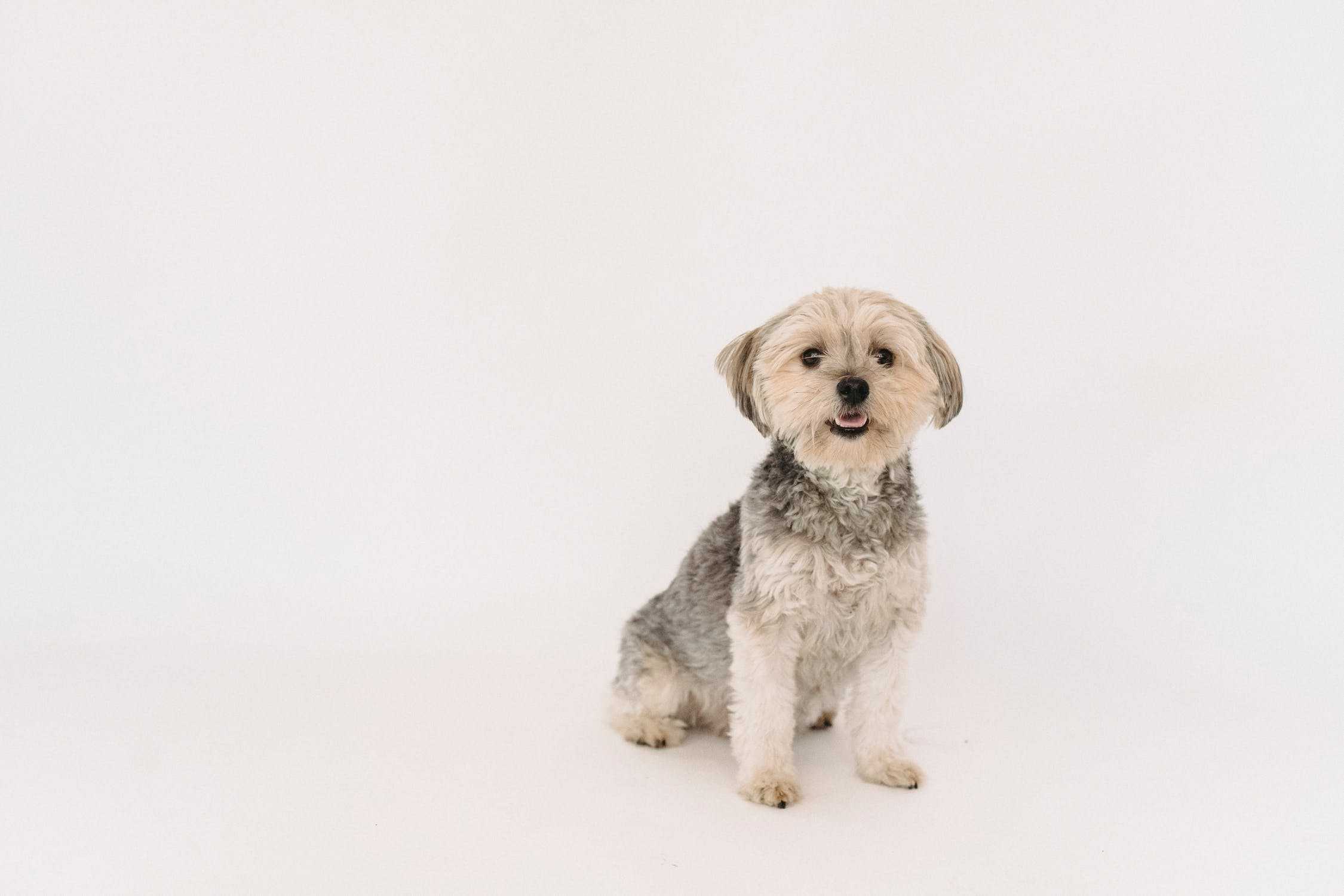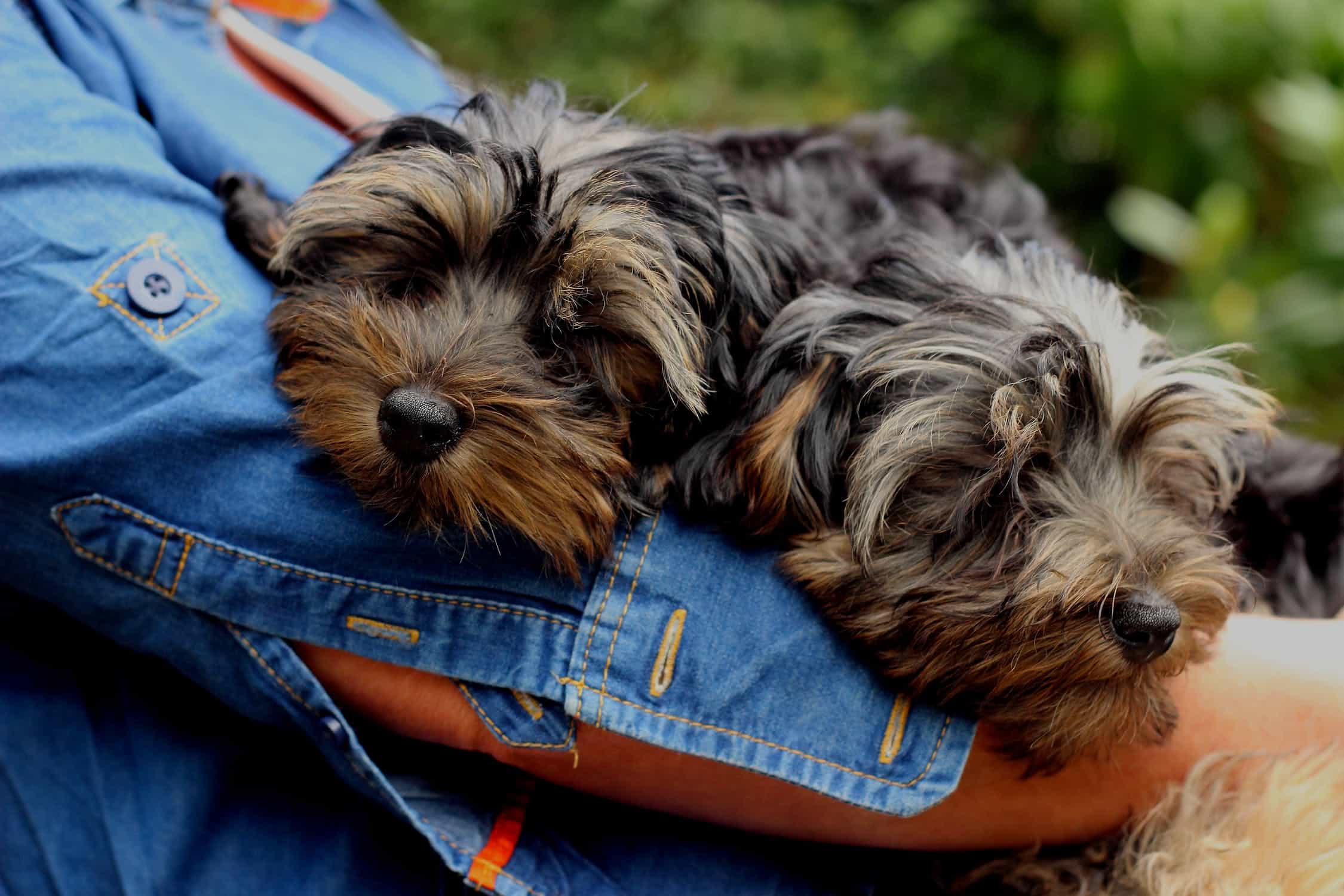Beagle Dog Overview
The Beagle should resemble a small Foxhound and is sturdy for its size.
The intermediate size of the Beagle allows it to follow on foot. Beagles can also be carried and scurry through thick underbrush.
Their dense, hard covering shields them from the underbrush. Their slim shape allows them to move quickly across uneven terrain.
The Beagle’s friendly personality allows it to get along with other dogs and make an excellent pet.
Beagles are known for their sweet-sounding bay. The deep muzzle provides more space for olfactory receptors, which contributes to the Beagle’s amazing sense of smell.
Beagle Highlights
- Housetraining Beagles can be tough. Some individuals claim that house training a Beagle might take up to a year. Crate training is strongly advised.
- Beagles can become bored if left alone in the house for an extended period of time. If left alone in the backyard, Beagles will begin to entertain themselves by howling, digging, or attempting to escape.
- The most common reason Beagles are surrendered to rescue organizations is because their owners or their owners’ neighbors have grown tired of their baying. Make sure you’re ready to collaborate with your dog to control excessive barking and wailing.
- Thieves target beagles in order to steal them and maybe sell them to research laboratories for use in tests. When your Beagle is outside, keep an eye on him and make sure he’s microchipped!
- Because Beagles are scenthounds, they will leave if they detect an attractive smell in the air. Their noses control their brains, and if they smell something intriguing, nothing else exists in their universe.
- Beagles, despite their loving and gentle nature, can be independent and headstrong. Obedience training is necessary, but make sure the instructor understands the hound’s disposition and prefers providing food as a reward (which few Beagles can resist).
- Do you recall how Snoopy, the famous cartoon dog, was concerned about his food bowl? Beagles are “chow hounds,” meaning they will eat excessively if given the opportunity. Give enough attention to the quantity of food you feed them, and make sure to keep your cupboards closed and trash cans locked. Otherwise, your Beagle will find the meals he enjoys the most.
- When it comes to food, your Beagle will most likely take its food bowl very seriously. Teach your children to respect your Beagle when eating and avoid approaching or teasing it with food.
- Beagles do not make good guards or protection dogs because they are usually friendly to everyone they meet.
Beagle Breed Features & Ratings:
Rated base on a 5 Star Scale
ENERGY LEVEL: 3 Star
EXERCISE REQUIREMENTS: 3 Star
PLAYFULNESS: 4 Star
AFFECTION LEVEL: 5 Star
FRIENDLINESS TO DOGS: 5 Star
FRIENDLINESS TO OTHER PETS: 5 Star
FRIENDLINESS TO STRANGERS: 5 Star
WATCHFULNESS: 1 Star
EASE OF TRAINING: 1 Star
GROOMING REQUIREMENTS: 1 Star
HEAT SENSITIVITY: 3 Star
VOCALITY 4 Star
Beagle Characteristics:
- Dog Breed Group: Hound Dogs
- Height: At the shoulder, it should be 13 to 15 inches tall.
- Weight: 18 to 30 pounds
- Life Span: 10 to 15 years
- Type: Purebred
- AREA OF ORIGIN: England
- DATE OF ORIGIN: 1300s
- OTHER NAMES: English Beagle
- Temperament: Friendly, Gentle, Independent, Intelligent, Lively, Loving, Sweet
- Activities: Agility, Conformation, Field Trials, Hunting Tests, Obedience, Rally
- Color: Tri-color (black, tan and white), and combinations of black, tan, red, white, brown, lemon, blue and redtick
- Litter Size: 2-14 puppies
- Puppy Prices: $800 – $1500 USD on average
Beagle Health:
Ethical breeders will examine their breeding stock for health problems such hip dysplasia, hypothyroidism, epilepsy, luxating patella (a dislocated kneecap), and eye abnormalities.
A Beagle’s ears, like all breeds, should be checked monthly, and its teeth should be brushed on a regular basis.
The National Breed Club recommends the following health tests:
- Hip Evaluation
- Ophthalmologist Evaluation
- MLS DNA Test
Beagle Grooming:
The Beagle breed standard allows for “any hound color.” Tricolor beagles have a black saddle (the area across the back), white legs, chest, belly, and a white tip on the tail, alongside a tan on the head and surrounding the saddle.
The second most known color combination is red and white spotting on the face, neck, legs, and tip of the tail in an Irish spotting pattern.
Whatever color they are, they usually have a white tip on their tails to help hunters notice them when hunting in tall grass.
Beagles have a rain-resistant double coat that is silky and dense.
The dogs should be brushed at least one in every week with a medium-bristle brush or a hound glove (a rubber mitt with nubs on the palm area) to loosen and remove dead hair and encourage new hair growth.
Beagles shed, however because their hair is short, it is not visible. Because their coats thicken in the winter, they shed more in the spring.
They are clean dogs (unless they’ve discovered something appealingly nasty to roll in) and don’t require frequent bathing.
Because Beagles have drop-eared ears, air does not circulate well inside their ears, causing infections. Check their ears for symptoms of infection or waxy buildup at least every two weeks.
Examine them as well if you notice your Beagle shaking his head or scratching at his ears. Never let water or oils get into his ears.
Brush your Beagle’s teeth at least twice a week to remove tartar and the bacteria that live inside it. Brushing twice a day is even preferable if you want to avoid gum disease and foul breath.
Cut your pet’s nails once or twice a month if he doesn’t wear them down naturally to avoid painful tears and other issues. They’re too lengthy if you can hear them clicking on the floor.
Dog toenails include blood veins, and if you cut too deeply, you may cause bleeding – and your dog may refuse to comply the next time the nail clippers come out. So, if you’re not used to clipping dog nails, get advice from a vet or groomer.
When your Beagle is a puppy, start accustoming him to being brushed and examined. Handle his paws frequently – dogs’ feet are sensitive — and look into his mouth.
Make grooming a pleasurable process full of praise and prizes, and you’ll build the framework for smooth veterinarian tests and other handling when he’s an adult.
Check for sores, rashes, or symptoms of infection such as redness, tenderness, or inflammation on the skin, nose, mouth, and eyes, and feet while you groom.
There should be no explicit redness or discharge in the eyes. Your thorough weekly check will assist you in detecting potential health issues early on.
Beagle Exercise:
Beagles are lively, enthusiastic dogs who need at least an hour of exercise per day.
This does not mean merely allowing them to roam around in the yard. Beagles were bred to operate in packs and are happiest when surrounded by other dogs.
When a Beagle is left alone for a lengthy amount of time, whether indoors or outside, he will become destructive. This can be prevented if he has a friend with whom to play (human or canine).
Because beagles are escape artists, a five-foot-tall fence that extends underground to prevent tunneling must be included in an exercise area.
Walking must always be done on a leash since a Beagle, being a scenthound with a strong hunting instinct, will be unable to resist the urge to dart off in search of an intriguing scent.
Beagle Training:
These daring hounds are ideal for both hunting and companionship, but basic obedience training is required.
Due to their strong-willed character, beagles can become rebellious and stubborn without it.
They are famously difficult to train and command, and you must make it exciting and fascinating for your canine to listen to your commands.
Beagle Food and Nutrition:
Beagles are infamous for detecting, plundering, and eating anything they can get their hands on. You should feed your dog two meals every day, each of which should contain up to 3/4 cup of dry dog food.
The amount will vary according to the dog’s size, age, level of activity, and other factors. Ensure that you keep the dog food and your human food safe from this thief.
Because of their omnivorous appetites, you will need to keep an eye on your dog’s weight and intervene if it appears to be getting too big.
Consult your veterinarian about your dog’s needs to get recommendations for the best food, feeding schedule, and amount.
Beagle Temperament and Personality:
Beagles are kind, sweet, and amusing animals. They will make you laugh, but only when they are not making you cry due to their frequently nasty conduct.
Beagle owners spend a lot of time attempting to outthink their dogs, and they frequently have to resort to food rewards to entice the Beagle into temporary obedience.
The Beagle, like all dogs, requires early socialization — being exposed to a variety of people, sights, sounds, and experiences — when they are young. Socialization ensures that your Beagle puppy develops into a well-rounded canine.
Beagle Care/Upkeep:
A gated backyard is essential for a scenthound like a Beagle. When out and about, keep your Beagle on a leash or securely contained and monitored.
He’s a wanderer by nature, so if he escapes — which is often with Beagles — make sure he has identification tags on his collar so he can be returned to you.
Although some people choose to install an underground electric fence, this form of enclosure does not keep other animals out of your yard.
Furthermore, if a fragrance is appealing enough, your Beagle will be more than willing to risk a brief shock in order to follow it.
Beagles, like all dogs, benefit from obedience training. Positive reinforcement strategies are the most effective because Beagles will just shut down if they are treated severely. Most Beagles will go to great lengths for a nice reward.
Adolescent Beagles have a lot of energy and require a lot of exercise to burn it off. They enjoy going for walks with their families, or even better, a good dash across a field in search of rabbits (not recommended unless you have trained your dog to come back to you).
They’ll enjoy jogging alongside you, but don’t start them on a repeated activity like this until they’re 18 months or older.
When the dog turns adult, a Beagle can become quite indolent, content to sleep around the home all day, only getting up for meals and possibly the occasional ear scratching. Don’t let this happen because this breed is prone to fat.
Beagle Relationship with Children and Other Pets
Beagles have strong bonds with everyone in the family, particularly children. They can be rowdy when playing; thus they must be properly socialized and monitored when playing with very young children.
Furthermore, Beagles are “mouthy,” grasping everything with their mouths, including your or your child’s hand, to play. They do this for amusement and can be trained not to do so.
As with any breed, children should always be taught how to approach and touch dogs, and all encounters should be supervised.
Teach your youngster to never approach a dog who is eating or sleeping or to try to take the dog’s food. No dog, no matter how nice, should be left alone with a youngster.
Beagles prefer company and dislike being left alone due to their pack dog background. Another dog or perhaps a cat will help them meet their companionship requirements.
Beagle Names
| Rank | Boy Names | Girl Names |
| 01 | Max | Molly |
| 02 | Jack | Daisy |
| 03 | Charlie | Luna |
| 04 | Toby | Molly |
| 05 | Buddy | Zoey |
| 06 | Tucker | Sadie |
| 07 | Cooper | Gracie |
| 08 | Bentley | Stella |
| 09 | Jack | Katie |
| 10 | Milo | Coco |
All About Beagle
The allure of a Beagle’s rich brown or hazel eyes, with their delicate, imploring look, is difficult to resist.
They’re cheerful, friendly, and affectionate, more than balanced by their hound temperament, curious, determined, and food-focused.
They’re not yappy, but they have three separate vocalizations, including a bark/growl, a baying howl, and lastly, a half-baying howl (a cross between a frantic bark and a bay).
The half-howl vocalization is normally reserved for when they see a quarry — or when they think it’s time to rouse the neighbors at 6 a.m.!
Because they are pack dogs, they generally get along well with other animals and their human companions – and they believe that everyone is their new best buddy.
The Beagle’s most important characteristic is that he is a scenthound. His nose is the most vital part of his body, and he is always looking down at the ground for an exciting path to follow.
Beagles have roughly 220 million scent receptors, compared to the pitiful 5 million or so in humans, making them excellent scent pickers. Dave Barry, a satirist, once described his in-laws’ Beagle as “a nose with feet.”
You’ve probably seen the Beagle’s nose in action at airports across the country.
In 1984, the United States Department of Agriculture decided to utilize Beagles to sniff out illegal food being carried into the country at Los Angeles International Airport.
The experiment was a resounding success. Because of its small size, friendly, and cute personalities, the Beagles did not frighten people who are scared of dogs, and fantastic nose capability allowed them to be trained to recognize specific food items while ignoring those that were not banned.
Members of the “Beagle Brigade” now police baggage-claim areas at over 20 international airports and other entry points into the United States. Despite their diversification into various spheres of endeavor, Beagles remain excellent small game hunters.
The National Beagle Club’s Institute Farm spearheaded AKC-sanctioned field trials in which breeders with packs compete in the field. Many other countries have similar Beagle hunting activities.
Because of their small size and gentle demeanor, Beagles do well in apartments if their owners are ready to walk them on a leash several times a day in all weather conditions.
They require a lot of exercises, at least an hour per day. Beagles can become destructive if left alone and unexercised.
Beagle History:
Beagles were developed in the 16th century in England, when Englishmen frequently possessed hound packs.
Beagles, the smaller hounds, were used for hunting rabbits and other tiny game. They were also used for flushing games for hunters like gun dogs.
The breed evolved over time in England and, later, in North America.
By the late nineteenth century, beagles had become more refined and widely recognized in North America, subsequently becoming one of the most famous breeds.
Despite the fact that they are still employed in packs for hunting, beagles are often regarded as excellent companions and family dogs. The American Kennel Club (AKC) first recognized the breed in 1885.
Beagles are scent hounds, tracking their prey by smelling the ground. Their strong sense of smell is comparable to that of bloodhounds and basset hounds.
The US Department of Agriculture employs them to detect illegal food products in luggage.
Snoopy from the “Peanuts” cartoon is a beagle, which reflects the breed’s popularity at the time Charles Schulz began drawing the comic strip in 1950. During his presidency, President Lyndon Baines Johnson had multiple beagles.
Where to Adopt Beagle:
Examine with your local animal shelter to see whether a beagle is in need of a home.
Check out state and regional rescue organizations, which include, but are not limited to:
- New Jersey: SOS Beagle Rescue
- Midwest: Midwest Beagle Rescue, Education & Welfare
- North Carolina: Triangle Beagle
- New England: Beagles of New England
- Southern California: Beans Beagle Rescue
- Pacific Northwest: Cascade Beagle Rescue
More Dog Breeds and Further Research:
If you believe a beagle is right for you, do plenty of study before purchasing one.
To learn more, talk to other beagle owners, trustworthy breeders, and rescue organizations.
If you’re looking for similar breeds, examine the benefits and downsides of these:
Beagle Fun Facts:
- Beagles Were Bred For Hunting.
- Their Ears Help Their Noses.
- Beagles Have Two Different Sizes.
- Beagles Can Vocalize Three Ways.
- Beagles’ Tails Are Like White Flags.
- Lots Of Beagles Have Jobs.
- A Beagle Named Elvis Can Smell Pregnancy.
Frequently Asked Questions (FAQs):
The Beagle is best renowned for its rabbit hunting abilities, although the breed has also been employed to hunt jackals and wild pigs. Although some beagles are still employed for hunting, either singly or in packs, the majority of beagles nowadays are beloved house pets.
Beagles can smell well, but they can also smell terrible at times. Proper bathing and hygiene can help, but the breed has its distinct odor. Every dog has a distinct aroma, so don’t expect a beagle to have a nose-cringing, nasty odor. The odor emanates from their hair follicles.
You should walk your Beagle for at least 20 minutes, preferably 30, and some Beagles may require up to 40 minutes. Cardiovascular activity should be brief and intense. This should be delivered at least once every week, preferably twice.



